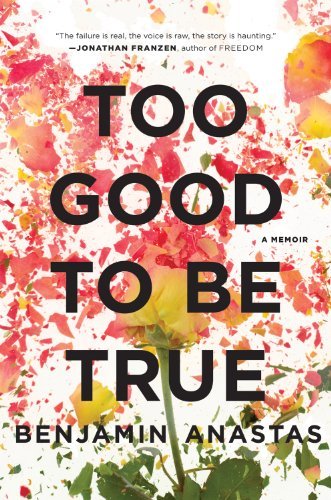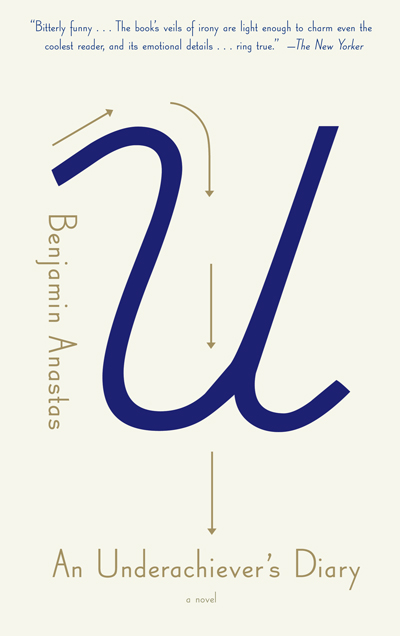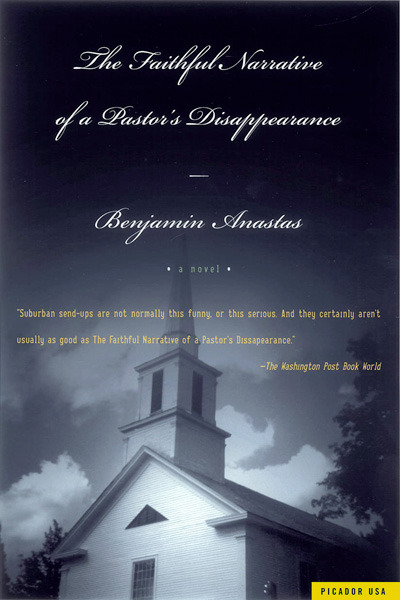When I was younger and just starting to review books on a regular basis I went through an emotional ‘spin’ cycle every time I faced the prospect of being edited. It started with the elation of finishing an assignment—I hadn’t learned yet how to put a piece aside before handing it in, to sleep on it for a night and let it grow strange again—and the inevitable letdown that came from attaching it to an email and hitting send. Why couldn’t my editor respond instantly, as soon as my message landed in their in-box? Didn’t they know how many hours I’d spent reading and underlining to prepare for the review, the effort I’d given to writing a piece that analyzed the author’s work, put it in a critical context, and still managed to stay light on its feet? Couldn’t they recognize that it was real writing rather than mere ‘book coverage’? (I had ambitions as a book reviewer: what can I say.)
I handled the inevitable pause before hearing back as well as I could. I left the house and went to the gym. I took the subway into Manhattan and spent some time with my favorite paintings at the old MoMA or the Frick. When I logged onto the internet, using my dial-up connection, and finally got the edit back from whoever I was writing the review for, I would immediately plunge into a fugue state of anger and recrimination—a kind of spell that I have associated with the computer screen ever since. They wanted me to cut what from my review? How could they? Didn’t they know I WROTE IT THAT WAY DELIBERATELY? And who told them they could just go in and muck around with my hard-won sentences?
I hated to be edited at that time in my life—it felt like a much deeper violation than it is—but I also loved to publish. So I seethed, cringed, and fumed away the hours that it took me to finish my rewrite. I haggled smaller points, argued larger ones, and, in general, made a nuisance of myself to editors who had a lot more experience at book reviewing than I did. And when the review was published soon afterwards, it was almost always stronger and more cogent than the piece I had originally handed in—I can think of a few exceptions to this rule, but not many. The reviews of mine I find unreadable now when I dredge them up online all bear the marks of my weaknesses as a writer, the faults of neurological habit and blind-spots of imagination, rather than the telltale signs of bad editing.
This is all prelude to an outtake I’m publishing here from my recent piece for The New Republic, “Teaching the Controversy,” about a class on Richard Wright and James Baldwin that I taught last fall at Bennington College. I was already working on the essay—or trying to work on it, anyway—when President Obama gave his speech in Selma, Alabama commemorating the 50th anniversary of the first march across the Edmund Pettus Bridge. It was a powerful moment, watching the Obama speak that day, John Lewis and the other surviving marchers sitting to his side, the iron bridge looming behind him; from certain camera angles, the name EDMUND PETTUS was hovering right over the President’s head. Pettus, of course, was a former Confederate Army General and Grand Wizard of the Klan in Alabama who was elected to the U.S. Senate twice during Reconstruction. In my essay, I write about how teaching a class on Wright and Baldwin in the post-Ferguson era helped me see, among other things, that it was Wright—with his education in the Jim Crow South and segregated north—who really knew America when it came to race. Baldwin’s doctrine of love is harder to reconcile with the legacy of racism and white supremacy that’s been unmasked all over again by the Obama presidency. Unmasked, that is, for those of us who don’t already have to negotiate it on a regular basis; who can remain, to use a word that Baldwin found so monstrous, “innocent.”
All of this was on my mind when I opened the first draft of my Wright and Baldwin essay with a long passage (about 800 words) on the march on Selma and the Obama presidency. I can see now that this discussion of the Selma speech doesn’t belong in the essay. My editor, Ted Ross, who I’d worked with once before at Harper’s Magazine, was quite right to cut it. When I was younger, I would have trembled with rage. I would have fired off a tortured email and used the only leverage I thought I had by threatening to pull the piece. (To which every editor in history has replied, “Sorry you feel that way. Best of luck placing it elsewhere.”) Now, with the benefit of experience, I wrote Ted: “I figured you would cut the opening. No problem. Let me look at the rest of the edits and get back to you.” It was a classic example of first-draft throat-clearing, and the essay is much stronger without the passage.
All of us write alone, in a vacuum of our own making; being edited, when it’s done well, frees us from the solipsism of self-flattery and the attachments that form so easily at the writing desk.
Here is the Selma opening—in all its discarded glory:
When President Obama gave his speech in Selma, Alabama on March 7th to commemorate the 50th anniversary of “Bloody Sunday” and the civil rights marches that led to the Voting Rights Act of 1965, the symbolism of the day was as powerful as his political oratory. There, looming at the President’s back, was Edmund Pettus Bridge, named for a former general in the Confederate army and Grand Dragon in the Klu Klux Klan who was elected twice to the U.S. Senate during Reconstruction. Now it was backdrop for a visit by the nation’s first black President, complete with his sleek traveling podium, the twin teleprompters that give his more conspiracy-minded critics fits, and plenty of black draping to help with the optics. In 1965, the Edmund Pettus Bridge had delivered orderly rows of non-violent marchers into an ambush by Alabama State Troopers and the Dallas County “deputies” who enforced Jim Crow with blunt force, many of them on horseback. President Obama, seizing the role of storyteller-in-chief—just what many of his supporters, including the novelist Junot Diaz, have been urging Obama to do more forcefully since the doldrums of his first term—honored the civil-rights marchers of Selma this way:
We gather here to celebrate them. We gather here to honor the courage of ordinary Americans willing to endure billy clubs and the chastening rod; tear gas and the trampling hoof; men and women who despite the gush of blood and splintered bone would stay true to their North Star and keep marching towards justice.
The President’s speech at Selma has been widely hailed as the finest he has delivered while in office. It is novelistic at times, like when Obama describes the scene early that March morning as John Lewis, who would lead that first doomed march from Selma, arrived at Brown Chapel to find it already full of young people with backpacks and bedrolls for the four-day’s journey to Montgomery, the state capital. A doctor was on hand to brief them on the effects of tear gas; movement veterans drilled the newcomers on “the tactics of nonviolence.” The marchers took comfort in these verses from the United Methodist Hymnal, which they sang aloud:
No matter what may be the test, God will take care of you; Lean, weary one, upon His breast, God will take care of you.
These and other touches throughout make the Selma speech easily the most literary of the President’s major addresses and remind us that his memoir, Dreams From My Father, is the work of a politician who is really a writer at heart. From the hymns to the movement’s protest songs, from the Declaration of Independence to Emma Lazarus’s “The New Colossus,” from James Baldwin and Langston Hughes to Ralph Waldo Emerson and Walt Whitman, Obama ranges through the canon of our National identity to make a case for the enduring impulse—he calls it “instinct”—that leads Americans of every race, gender, economic status and sexual orientation to keep perfecting the union promised in the country’s founding documents and confront injustice wherever it persists.
“If we want to honor the courage of those who marched that day,” Obama insists, “then all of us are called to possess their moral imagination.”
His speech is a call to action for the next generation to take up the mantle laid down in Selma and keep marching; a stinging rebuke to a Republican opposition that has questioned his citizenship, lobbed insults from the House floor (“You lie!”), accused him of “Kenyan anti-colonial behavior,” wagged a finger at him on the tarmac in Arizona, shut down the government rather than fund his healthcare plan, invited a foreign leader to give a speech against U.S. foreign policy in the halls of Congress, sent an open letter to the leaders of the Islamic Republic of Iran to try an undermine a historic nuclear deal while it was being negotiated. Standing in the shadow of the Edmund Pettus Bridge, it was clear the President felt a kinship with the Americans who had marched that day in Selma and in the days and weeks that followed, both black and white—who inflamed the forces of the white supremacist South into revealing to the world just what kind of darkness they harbored in their inmost hearts.
“Can we pray together, you and I?” a young protester named Jimmy Webb asked a Deputy Sheriff in Selma when he barred Webb and his group of protesters from trying to get to the County Courthouse from Brown Chapel, which had been barricaded by law enforcement. Webb was small and scrawny, dressed in a clean white shirt, and he stood up to the Deputy and his officers with a quiet dignity that seems almost unfathomable now. A single news camera—the cellphone camera of its day—captured it all for posterity.
“You do your prayer and I do mine, big boy,” the Deputy Sherriff answered Webb. “You don’t pray for me—“ His temper flared and he leaned in menacingly. “I don’t want you to pray for me!”
Watching President Obama’s speech in Selma on my laptop the other day, both lanes of traffic on the bridge standing empty behind him, I thought of a line from Claudia Rankine’s Citizen: A Lyric, another statement on the racial divide in America that makes extensive use of Baldwin:
That’s the bruise the ice in the heart was meant to ice.








